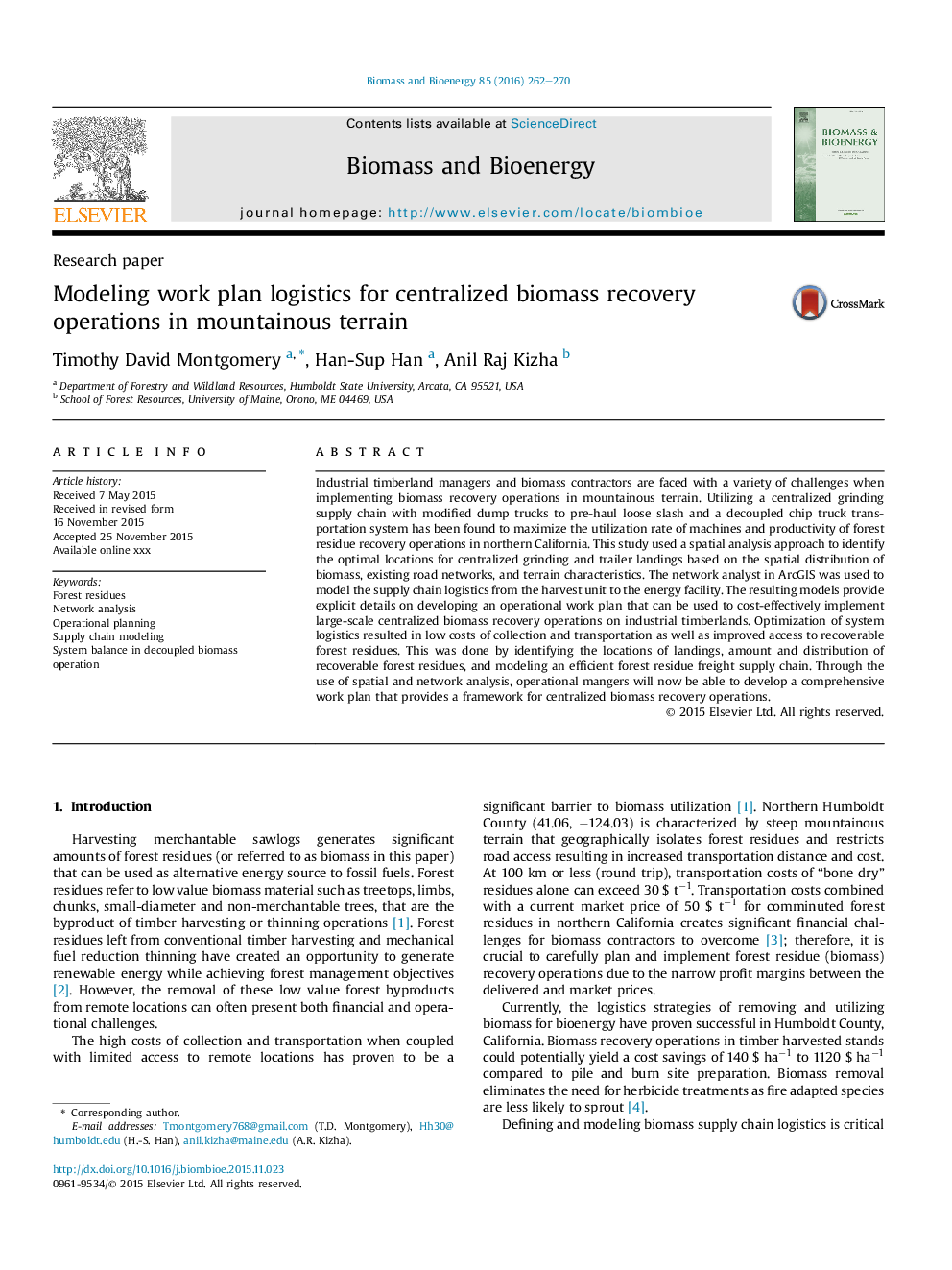| Article ID | Journal | Published Year | Pages | File Type |
|---|---|---|---|---|
| 7063549 | Biomass and Bioenergy | 2016 | 9 Pages |
Abstract
Industrial timberland managers and biomass contractors are faced with a variety of challenges when implementing biomass recovery operations in mountainous terrain. Utilizing a centralized grinding supply chain with modified dump trucks to pre-haul loose slash and a decoupled chip truck transportation system has been found to maximize the utilization rate of machines and productivity of forest residue recovery operations in northern California. This study used a spatial analysis approach to identify the optimal locations for centralized grinding and trailer landings based on the spatial distribution of biomass, existing road networks, and terrain characteristics. The network analyst in ArcGIS was used to model the supply chain logistics from the harvest unit to the energy facility. The resulting models provide explicit details on developing an operational work plan that can be used to cost-effectively implement large-scale centralized biomass recovery operations on industrial timberlands. Optimization of system logistics resulted in low costs of collection and transportation as well as improved access to recoverable forest residues. This was done by identifying the locations of landings, amount and distribution of recoverable forest residues, and modeling an efficient forest residue freight supply chain. Through the use of spatial and network analysis, operational mangers will now be able to develop a comprehensive work plan that provides a framework for centralized biomass recovery operations.
Related Topics
Physical Sciences and Engineering
Chemical Engineering
Process Chemistry and Technology
Authors
Timothy David Montgomery, Han-Sup Han, Anil Raj Kizha,
